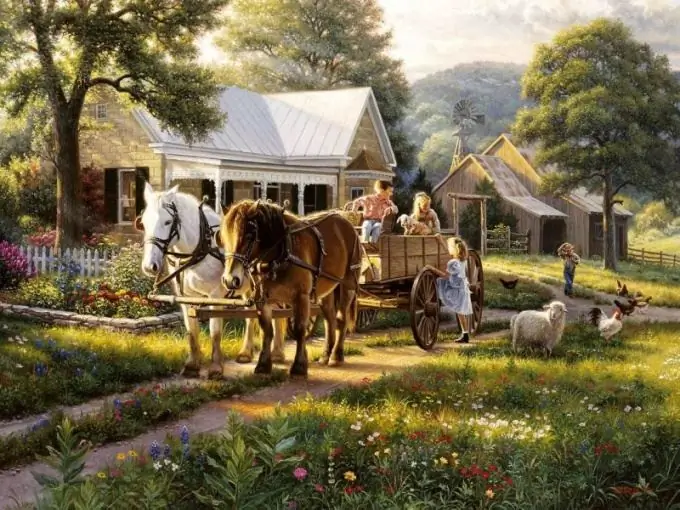An experienced artist can paint anything - even a farm. If you do not yet consider yourself a professional, you should know some of the nuances that allow you to make the farm believable and realistic in the picture.

It is necessary
- - paper;
- - brushes, pencils;
- - eraser;
- - paints;
- - nature or pictures of the farm.
Instructions
Step 1
Decide what kind of farm will be shown in your drawing and what thoughts you want to convey to the viewer. If you decide to draw a large livestock complex, try to convey the scale of the organization, for example, show long rows of barns or large grazing fields. Broad perspectives and lots of repetitive detail will be appropriate here.
Step 2
If you need to draw a small private farm, try to convey the diversity and versatility of such a farm. To do this, depict a variety of animals living on the farm: a cow, chickens, pigs, horses. At the same time, try to show the plot, and not a simple set of animals and buildings, for example, a leaving carriage, which everyone sees off, an afternoon rest, a hot season - haymaking, morning milking, etc.
Step 3
If you live in a metropolis and have never seen a farm, look at photographs of it or visit your relatives in the village. The villagers should look around with different eyes to see the beauty in their usual things.
Step 4
Choose paints and canvas that can best convey the mood of the painting. For a hot summer day, choose pastels in warm and hot colors, and for a cold rainy morning, use an ink pen.
Step 5
Try to overcome the temptation to put too much in the forefront. Only the most important should be here, and in order for the gaze to move further, deeper into the picture, connect the foreground and middle plans with roads, paths or other elements that lead into the distance.
Step 6
Pay close attention to the ratio of light and shadow in the picture of the farm. Shadows will help you break up the flat foreground and make objects and animals stand out. The glare of the sun, for example, in the water or in the hair, will give the picture an effect.
Step 7
After you complete the basic outlines, move on to drawing the details of the drawing - pebbles, grass, harness, tools, etc.






